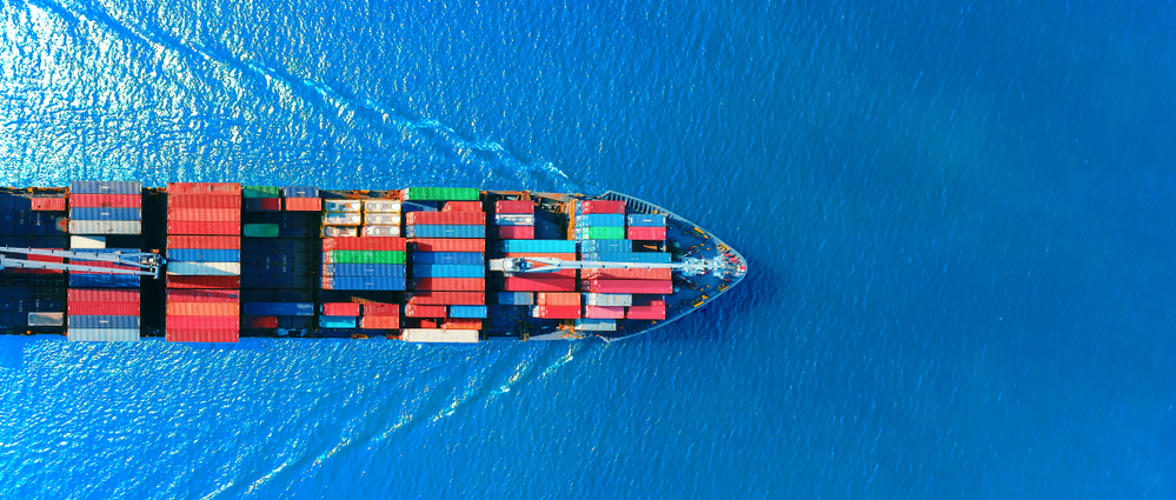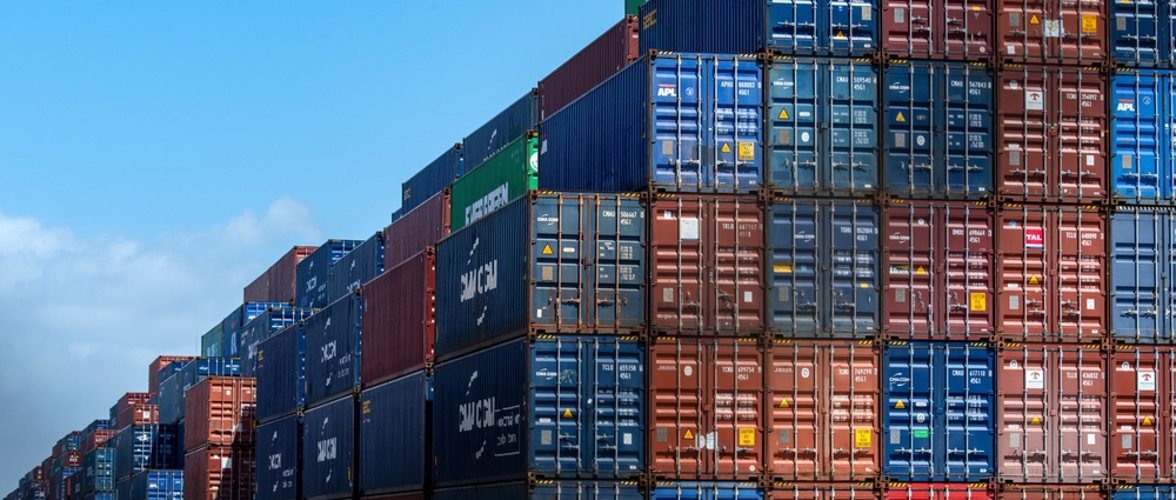Key Takeaways
- The Red Sea crisis is threatening to reignite global inflation, which has shown signs of easing over the past few months.
- Most vessels are rerouting around the Cape of Good Hope, with the extra time and fuel needed costing shipping companies millions extra each voyage.
- The global impacts of the ongoing crisis will likely be widespread, with industries from energy and commodities right through to manufacturing bearing the weight of disruptions.
The escalating crisis in the Red Sea is threatening global economic stability at a time when markets finally looked like they were stabilising. Rising tensions in the Middle East have triggered Houthi rebel attacks from Yemen on commercial vessels passing through the Red Sea into the Suez Canal, severing this essential global trade artery. This looks set to reignite inflationary pressures at a time when they were just starting to ease.
For the past six months, there’d been a glimmer of hope on the inflation front. In the US, the Consumer Price Index (CPI) dipped from 6.4% in July 2023 to 3.4% in December 2023, according to the US Bureau of Labor Statistics, offering cautious optimism of a return to standard inflation levels. This trend also played out in the eurozone, where Eurostat show that the Harmonised Indices of Consumer Prices (HICP) fell from 8.3% in January 2023 to 2.9% at the end of December. Inflation in the UK and Australia has followed a similar pattern.

But how are these tentative movements towards economic normalcy likely to be affected by the escalating situation in the Red Sea?
The Red Sea is the southern gateway to the Suez Canal. It’s a vital trading route, responsible for up to 30% of global container shipping, and around 20,000 ships pass through the canal every year. It’s the primary trading route for shipping from Asia to Europe, with the alternative being to pass the Cape of Good Hope on the southern coast of Africa – this can take as much eight and a half days longer.
Disruption to maritime traffic in this key corridor carries the potential to reignite inflationary pressures and supply side disruptions. The chaos that was caused by the Ever Given container ship blocking the canal for six days in March 2021 serves as a blueprint for what’s to come; this particular incident ended with a queue of around 430 ships waiting to pass through. Showing the huge cost that this brought, insurance company Allianz estimated that a block in the Suez canal could cost global trade between USD$6-10 billion each week.
The current crisis in the canal poses far more risk than the 2021 blockage. Ships passing through the Red Sea now run the risk of having their cargo captured by Houthi pirates – and the situation has no end date in sight.
But which industries are most threatened by the latest trade disruption? And what can they do to try to mitigate the risks?
Energy & commodities
The threat that the Red Sea crisis poses to energy and commodity markets is obvious. Around 12% of seaborne oil and 8% of liquefied natural gas passes through the Suez Canal. With the EU and UK cutting off oil and gas supplies from Russia in the wake of its invasion of Ukraine, Europe has become more reliant on energy supplies from the Middle East, making the canal an even more important gateway.
The crisis has undoubtedly increased both costs and risk for energy and commodity suppliers. Rerouting around Africa can add weeks to journeys, hiking transportation fees and straining already stressed supply chains. On top of this, insurance premiums have surged for vessels venturing into the Red Sea, adding another extra expense.
But the situation isn’t without opportunities. Energy and commodity suppliers have enjoyed record windfall profits over the last couple of years, as prices have been at record highs. For example, the world’s biggest energy and commodity trading company, Vitol Group, recorded a 258% increase in profit to US$15.1 billion in 2022 as prices surged. If the Red Sea crisis drives another price spike in 2024, commodity companies could once again see their profits skyrocket.
Tips for success
- Diversify and adapt routes: To mitigate risk, energy and commodity should explore alternative shipping routes beyond the Suez Canal, including over land and through pipelines. They can build partnerships with regional logistics providers to help goods move efficiently through alternative channels.
- Embrace risk management: Commodity companies should secure comprehensive marine insurance coverage to mitigate potential losses. They’ll also benefit from developing contingency plans for various disruption scenarios and implementing proactive risk management strategies to cut the effect on their finances.
- Share costs and risk: Working with other stakeholders in the supply chain will better spread the heightened risk of Red Sea travel. Ultimately, rising freight costs need to be passed on to wholesalers.
Shipping & logistics
The Red Sea crisis’ most obvious effect is on the transport and logistics world. Disruptions have already hit shipping companies hard, blowing up schedules and budgets. Ports are scrambling to accommodate diverted vessels, creating congestion and delays.
On 13 December 2023, major shipping operators (accounting for 70% of global shipping traffic) announced that they would no longer send their ships through the canal. Rerouting around the Cape of Good Hope adds around 3,300 nautical miles and 10-14 days to every journey, costing up to US$1 million more for fuel.

Asia-Europe and Asia-Mediterranean routes have been the worst hit – these are among the busiest and most used shipping routes in the world. The sudden hike in travel times has created a shortage in available cargo vessels and 300%+ rise in 40-foot equivalent unit (FEU) shipping prices in the last month.
Tips for success
- Develop flexible routing strategies: Shipping companies need to continuously evaluate and adapt shipping routes based on real-time security updates and conditions. They should strongly consider alternative routes around the Cape of Good Hope, as well as inland and air transportation options.
- Maximise on-board security: Ship crews in crisis management can hire onboard security teams to deter potential boarding. Crews should also make sure they can contact nearby patrolling vessels in the case of being targeted.
- Create contingency plans: Shipping companies need to develop contingency plans in case disruptions like this occur again in the future; this will help minimise the potential losses occurred.
Insurance companies
The conflict in the Red Sea has created much higher risk, causing great uncertainty for insurance companies. Though it’s possible they could benefit from sky-high premiums inflating cash flows, the risk of insuring vessels in the Red Sea is too high for most providers to consider taking on.
The rapidly evolving situation makes it near impossible for insurance firms to properly estimate premiums. Each voyage into the Red Sea is a gamble, with millions of dollars at stake. Some insurers have already had to pay out seven-figure sums for ships that have been targeted by Houthi forces. Because of this, most insurance companies are now refusing to cover cargo sent through the Red Sea – some have even cancelled previously agreed policies.
It's not all doom and gloom, though. Given the longer voyage time of ships rerouting around the Cape of Good Hope, insurance companies are able to charge higher premiums to these carriers.
Tips for success
- Offer rerouting policies: Most shipping companies are diverting shipments pass the Cape of Good Hope; insurance companies need to be able to offer appropriate policies for the new voyages.
- Avoid Red Sea risk: The situation in the Red Sea is currently too unstable for any viable insurance policy, so providers should cease providing insurance to vessels in the region and cancel existing plans wherever they can.
- Diversify portfolios: Allocate resources to other geographical areas with lower geopolitical risk, allowing for a more balanced exposure level.
Manufacturers
Disruption to trade could have a major impact on major Eastern manufacturing economies like China, India and Japan. China is already struggling to stimulate domestic consumer spending and has experienced slower than forecast economic growth in 2023. With longer journey times for rerouted ships disrupting just-in-time delivery systems, manufacturers are being forced to hold bigger inventories, straining cash flow even more.
The crisis isn’t just affecting manufacturers in Asia. A lot of manufacturing in western countries relies heavily on imported inputs from overseas. Just look at the electronics market – over 60% of global semiconductors are made in Taiwan and, as proved by the global chip shortage over the past few years, any disruption to the supply of these microchips can have major ramifications for manufacturers all over the world.
Tips for success
- Seek alternative markets: Manufacturers should form relationships with markets in regions less affected by the Red Sea crisis, such as Africa and the Americas. This could help buffer losses caused by the current and future instability in other countries.
- Adjust inventory strategy: Building up inventory levels will limit the impact of potential delays and disruptions caused by the Red Sea crisis.
- Diversify supply chains: Identify alternative suppliers in other geographic locations to mitigate the risk of trade disruptions affecting the entire production process.
- Evaluate nearshoring and onshoring options: This can reduce dependency on long-distance shipping and provide more control over the supply chain, especially for items with longer lead times.
Final Word
The escalating crisis in the Red Sea poses a serious threat to global trade, economic recovery and inflation levels. Businesses in various areas of the economy face increased costs, risks and disruptions.
While the crisis brings challenges, stakeholders have to adapt and seize what opportunities they can if they’re to navigate this instability successfully – and carry what they learn into the future, too. Contingency planning, risk management and alternative strategies will be key to survival as unpredictable geopolitical events become an ever-more present aspect of international trade.









